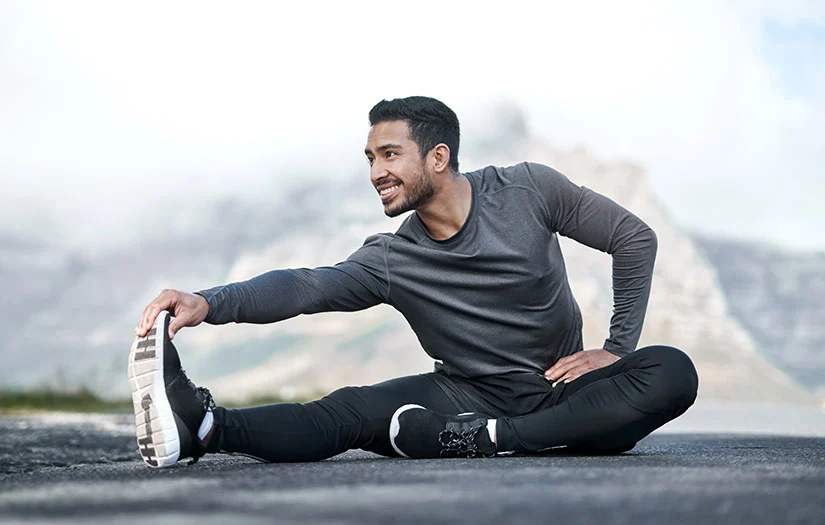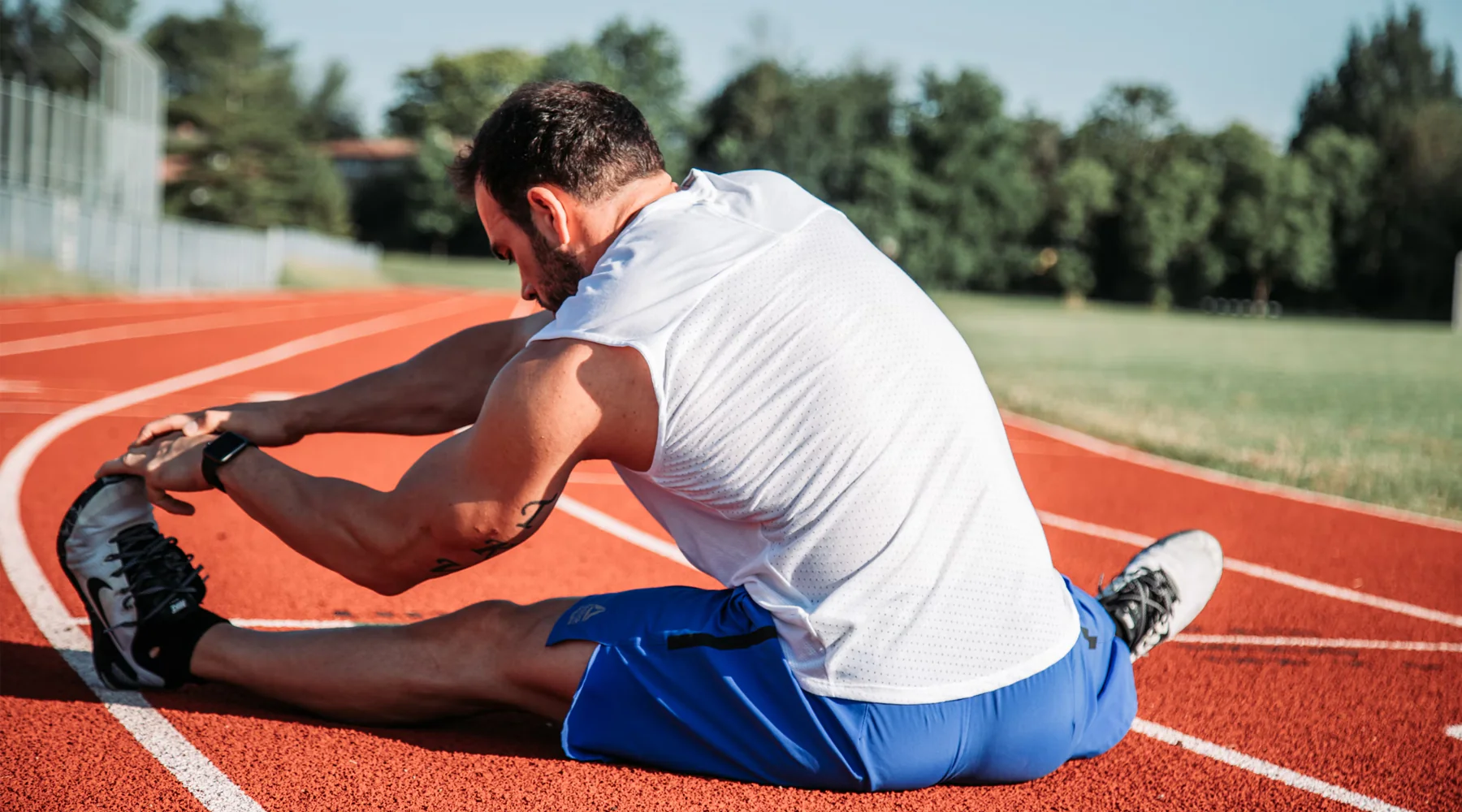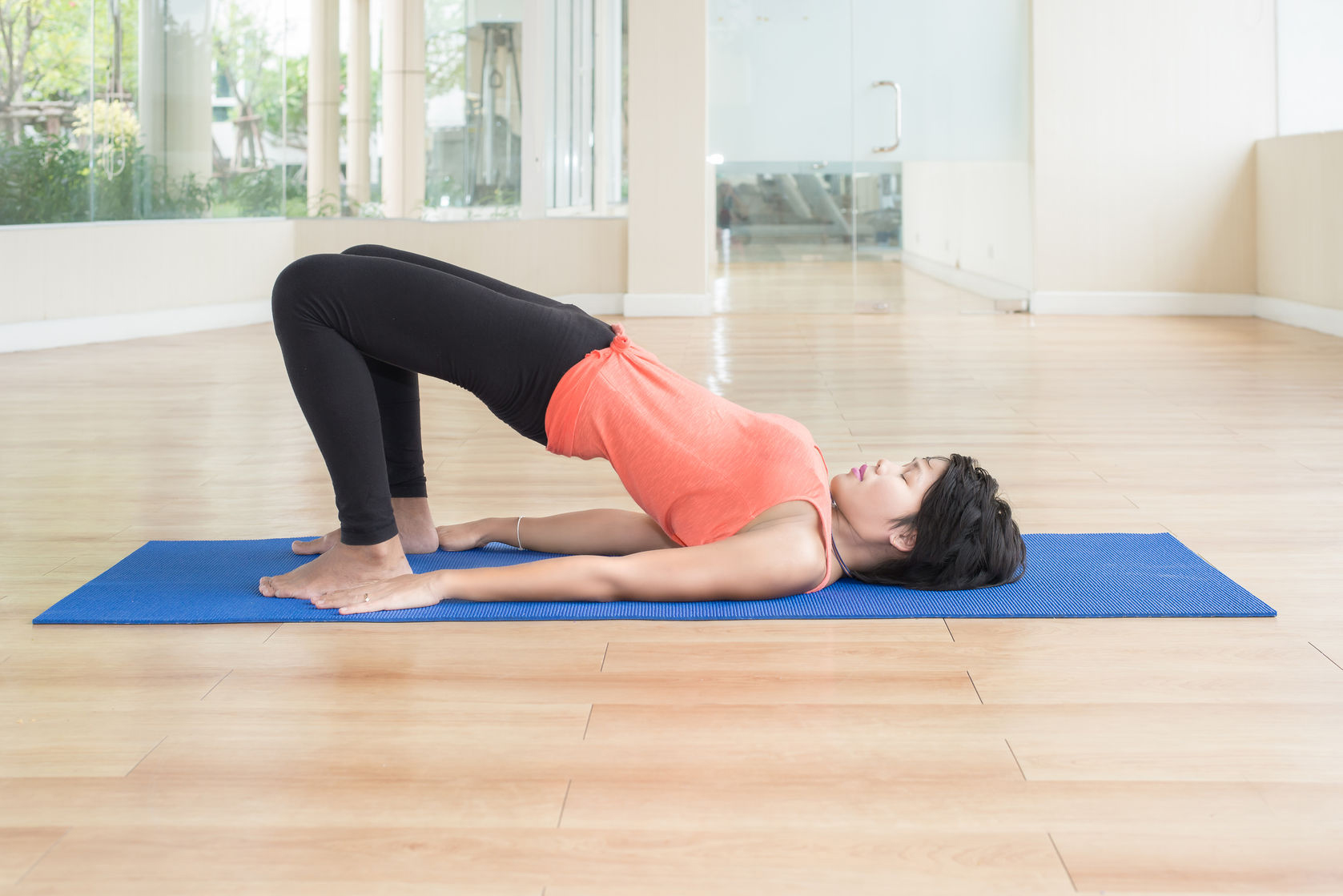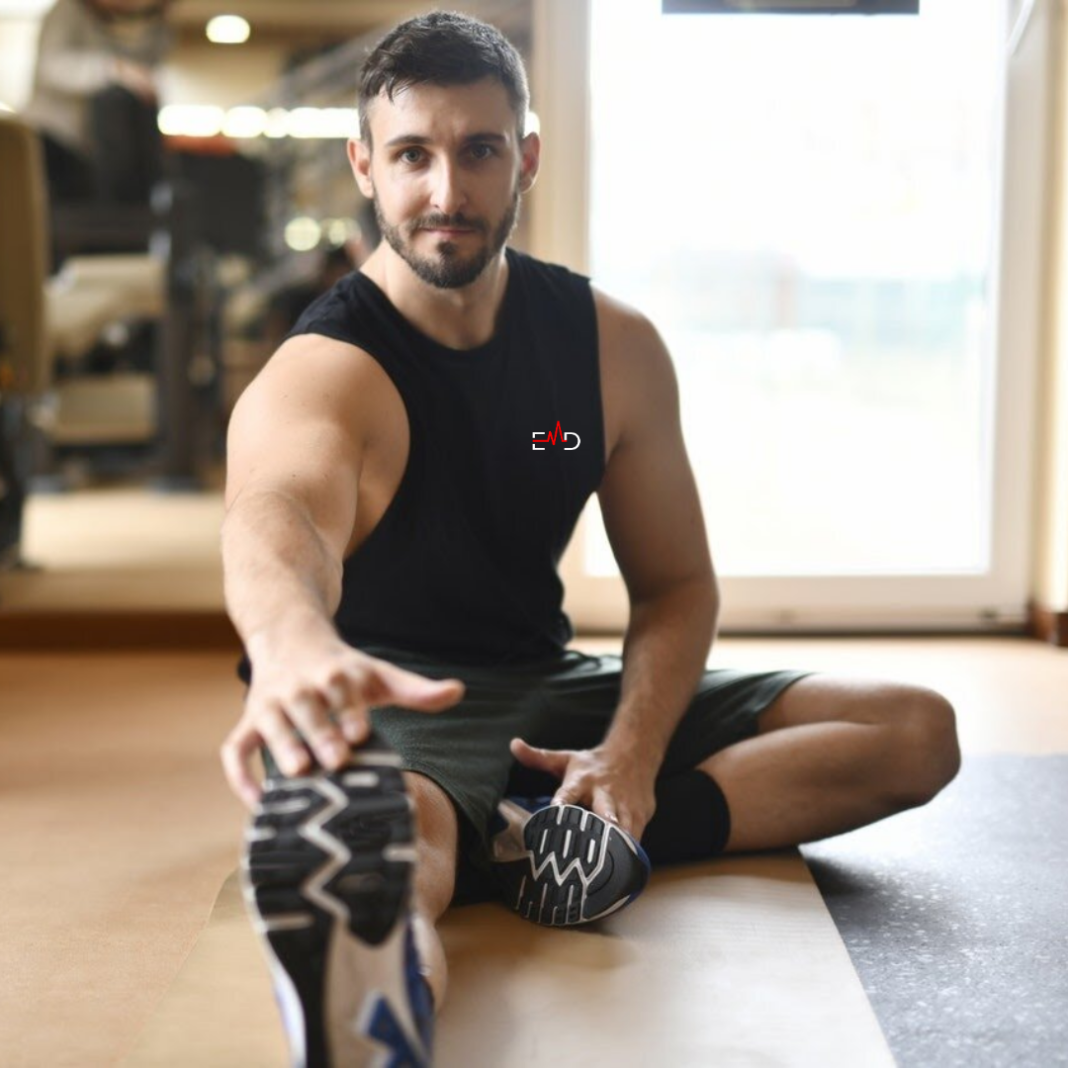Exercise Daily – Stretching is an essential component of any fitness routine, providing numerous benefits that go beyond simply improving flexibility. Whether you’re an athlete, a desk worker, or someone looking to enhance your overall well-being, incorporating stretching exercises into your daily routine can significantly impact your body and mind. In this article, we will explore the importance of stretching, its benefits, different stretching techniques, how to incorporate stretching into your routine, and important tips to remember. So, let’s dive in and discover why flexibility matters!
Stretching is often overlooked in an athlete’s training regimen, but it is a crucial component of overall performance and injury prevention. Incorporating stretching into your routine can benefit athletes of all levels. By incorporating stretching into your training regimen, you can experience many benefits, including improved performance, reduced injury risk, and enhanced overall well-being. Remember to listen to your body and gradually increase the intensity and duration of your stretches as your flexibility improves.
What is Stretching?
Before we delve into the benefits of stretching, it’s important to understand what stretching actually means. Stretching involves intentionally lengthening or elongating specific muscles or muscle groups to improve flexibility and increase the range of motion around a joint. It is a deliberate and controlled movement that aims to elongate the targeted muscle fibers gently. Stretching can be done in various ways, and the type of stretching technique used can depend on the individual’s needs, fitness goals, and the specific muscle groups being targeted.

The Importance of Stretching
Stretching is not just about touching your toes or performing impressive splits; it is important for overall physical well-being. Let’s explore why stretching is so crucial:
Improved Flexibility and Range of Motion
One of the primary benefits of stretching is improved flexibility. Flexibility refers to the ability of your joints and muscles to move through their full range of motion. Regular stretching helps lengthen the muscles and tendons, allowing for greater joint mobility and increased flexibility. By improving flexibility, you can perform everyday activities more comfortably, enhance your athletic performance, and reduce the risk of injury during physical activities.
Enhanced Workout Performance
Incorporating stretching into your exercise routine can positively impact your workout performance. When your muscles are properly stretched, they are more prepared for the demands of physical activity. Stretching helps warm the muscles, increases blood flow, and improves muscle coordination, helping you perform better during workouts or athletic endeavors.
Injury Prevention
Stretching plays a crucial role in injury prevention. By improving flexibility and range of motion, stretching reduces muscle tightness and imbalances, which are common causes of injuries. When muscles are tight, they are more prone to strains, sprains, and tears. Regular stretching helps correct muscle imbalances, improves posture, and reduces the risk of injury by preparing the muscles and joints for movement.
Reduced Muscle Tension and Soreness
Have you ever experienced muscle soreness after a workout? Stretching can help alleviate muscle tension and post-workout soreness. Stretching promotes blood flow to the muscles, which helps flush out metabolic waste products and toxins.
Increased Blood Flow and Oxygenation
Stretching increases blood flow to the muscles, improving circulation and oxygenation. This enhanced blood flow delivers vital nutrients and oxygen to the muscles, promoting overall health and function. It also aids in the removal of metabolic waste products, reducing muscle fatigue and improving recovery after exercise.
Stress Relief and Improved Mental Well-being
Stretching not only benefits the body but also has a positive impact on mental well-being. Engaging in stretching exercises can help reduce stress levels and promote relaxation. Stretching releases endorphins, the feel-good hormones that can elevate your mood and provide a sense of calm and well-being. It can also serve as a form of mindfulness, allowing you to focus on your body and the present moment.
Back Pain Relief
If you suffer from lower back pain, stretching can be a valuable tool for relief. Many cases of back pain are attributed to muscle imbalances, tightness, or poor posture. Stretching the muscles of the lower back, hips, and hamstrings can help alleviate tension, improve flexibility, and relieve back pain. Regular stretching exercises targeted at these areas can provide significant relief and prevent future episodes of back pain.
Improved Muscle Coordination and Balance
Stretching exercises help improve muscle coordination and balance. When muscles are flexible, they can move through their full range of motion more effectively, leading to better coordination. Enhanced muscle coordination not only improves athletic performance but also reduces the risk of falls and injuries in daily activities.
Facilitates Everyday Activities
Flexibility plays a crucial role in performing everyday activities with ease. Whether it’s bending down to tie your shoes, reaching for objects on high shelves, or getting in and out of a car, having good flexibility allows you to move freely and comfortably. Regular stretching ensures that your muscles are supple and ready for the movements required in daily life.
Improved Posture
Sitting for extended periods or adopting poor posture can lead to muscle imbalances and postural issues. Stretching exercises that target the chest, shoulders, and hip flexors can help correct these imbalances, improve posture, and relieve muscle tension. Maintaining good posture not only enhances your appearance but also contributes to better spinal alignment and overall spinal health.
Enhanced Muscle Strength
Stretching doesn’t just increase flexibility; it also has a positive impact on muscle strength. Stretching a muscle activates and recruits more muscle fibers, leading to improved muscle strength and function. Combining stretching with resistance training exercises can maximize your muscle gains and overall strength.
Rehabilitation and Recovery
Stretching plays a crucial role in exercise and rehabilitation programs. It helps improve joint mobility, reduces muscle stiffness, and aids in the recovery process after injury or surgery. Stretching exercises prescribed by healthcare professionals or physical therapists can help restore function, reduce pain, and facilitate healing.
Flexibility Training for Athletes
For athletes, flexibility is essential for optimal performance and injury prevention. Sport-specific stretching routines can improve flexibility in the muscles used during specific activities, enhancing sports performance and reducing the risk of sports-related injuries. Whether you’re a runner, a dancer, a martial artist, or involved in any other sport, incorporating stretching into your training regimen can give you a competitive edge.
Stretching for the Elderly
Our muscles naturally become tighter as we age, and joint mobility decreases. Regular stretching exercises can help counteract these age-related changes, improve flexibility, and maintain functional independence. Stretching for the elderly can enhance balance, reduce the risk of falls, and improve overall quality of life.
Stretching for Desk Workers
Sitting at a desk for prolonged periods can lead to muscle imbalances, poor posture, and stiffness. Incorporating stretching exercises into the daily routine of desk workers can help alleviate these issues. Stretching the chest, shoulders, neck, and hip flexors can counteract the effects of prolonged sitting, improve posture, and reduce muscle tension.

The Benefits of Stretching for Athletes
Stretching is a crucial component of an athlete’s routine, offering many benefits that enhance performance, prevent injuries, and promote overall well-being. While often overlooked or undervalued, regular stretching provides both immediate and long-term advantages for athletes across various sports. Here are the key benefits of stretching for athletes:
1. Improved Flexibility and Range of Motion
One of the primary benefits of stretching is the enhancement of flexibility and range of motion. Flexible muscles allow athletes to perform movements more efficiently and with greater ease. This is particularly important in sports that require a wide range of motion, such as gymnastics, swimming, and martial arts. Improved flexibility can also lead to better overall athletic performance.
2. Injury Prevention
Stretching helps in reducing the risk of injuries. By elongating the muscles and tendons, stretching increases the muscle’s ability to withstand stress and tension. It also prepares the muscles for the activities ahead, ensuring they are less likely to suffer from strains, sprains, or tears. Dynamic stretching before exercise can warm the muscles, while static stretching post-exercise can aid in muscle recovery.
3. Enhanced Muscle Performance
Stretching improves blood flow to the muscles, which can enhance their performance. Increased circulation means more oxygen and nutrients are delivered to the muscles, helping them to function more effectively. This can improve strength, speed, and endurance during athletic activities.
4. Better Posture and Alignment
Regular stretching helps maintain proper posture and alignment by elongating tight muscles that can pull the body out of its natural alignment. For athletes, maintaining good posture is essential as it can enhance technique, reduce the risk of injury, and improve overall performance. For instance, in sports like running and cycling, proper alignment can lead to more efficient movements.
5. Reduced Muscle Soreness
Post-exercise stretching can help reduce muscle soreness, also known as delayed onset muscle soreness (DOMS). Stretching helps to alleviate the build-up of lactic acid in the muscles, which is often a cause of post-workout soreness. This can lead to quicker recovery and less discomfort after intense training sessions or competitions.
6. Mental Relaxation and Stress Relief
Stretching is not only beneficial for the body but also for the mind. It can be a form of active meditation, helping athletes to relax and reduce stress. This mental relaxation can improve focus, concentration, and mental clarity, which are crucial for peak performance in sports. Incorporating stretching into a cool-down routine can also signal the end of intense activity, helping the body and mind to unwind.
7. Improved Coordination and Balance
Stretching can improve an athlete’s coordination and balance by enhancing proprioception, which is the body’s ability to sense its position in space. Better coordination and balance can improve performance in sports requiring precise movements and stability, such as gymnastics, dance, and certain team sports.
8. Enhanced Overall Athletic Performance
The combination of increased flexibility, reduced injury risk, improved muscle performance, better posture, and mental relaxation can enhance overall athletic performance. Athletes who stretch regularly can often train harder, recover faster, and perform better in their respective sports.

Stretching Techniques and Best Practices
Now that we understand the importance and benefits of stretching, let’s explore different techniques and best practices to ensure safe and effective stretching sessions.
Static Stretching
Static stretching is the most common form of stretching, involving holding a stretch for a prolonged period, usually around 30 seconds. It aims to elongate the muscle and increase flexibility gradually. Static stretching is ideal for post-workout cool-downs or when the muscles are warm.
Dynamic Stretching
Dynamic stretching involves moving through a range of motion while stretching the muscles. It incorporates controlled movements that mimic the activities or sport you’re about to engage in. Dynamic stretching helps warm the muscles, increase blood flow, and prepare the body for physical activity. It is commonly used as part of a pre-workout routine.
Active Stretching
Active stretching involves using the strength of the opposing muscle group to stretch the target muscle group. It requires active engagement and contraction of the opposing muscles while stretching the target muscles. For example, if you want to stretch your hamstrings, you can perform an active stretch by lying on your back and actively lifting your leg towards your chest using your hip flexor muscles.
Passive Stretching
Passive stretching involves external assistance, such as a partner, gravity, or props, to achieve a deeper stretch. In passive stretching, you relax your muscles while an external force applies the stretch. This technique allows for a greater range of motion and is commonly used in partner-assisted stretching or yoga props like straps or blocks.
PNF Stretching
Proprioceptive Neuromuscular Facilitation (PNF) stretching is a technique that combines passive stretching and isometric contractions to improve flexibility. It involves stretching the target muscle, contracting it against resistance for a few seconds, and finally relaxing and stretching the muscle further. PNF stretching is often considered one of the most effective methods for increasing flexibility.
Incorporating Stretching into Your Routine
To reap the benefits of stretching, it’s important to incorporate it into your routine in a consistent and effective manner. Here are some ways to include stretching in your daily routine:
Pre-Workout Stretching
Perform dynamic stretches before your workout or physical activity to warm the muscles, increase blood flow, and improve flexibility. Dynamic stretches should mimic the movements you’ll be performing during your workout.
Post-Workout Stretching
After your workout, stretch static to cool down the muscles and promote recovery. Hold each stretch for 15-30 seconds and focus on the major muscle groups you worked on during your exercise session.
Daily Stretching Routine
Consider establishing a daily stretching routine that targets all major muscle groups. Set aside a specific time each day to dedicate to stretching exercises. This can be in the morning to wake your body or in the evening to relax and unwind.
Stretching at Work or Home
If you have a sedentary job or spend much time at home, stretch during the day. Perform simple stretches for the neck, shoulders, wrists, hips, and legs to counteract the effects of sitting for long periods.

Stretching Tips and Precautions
While stretching offers numerous benefits, it’s important to approach it cautiously and follow best practices. Here are some tips and precautions to keep in mind:
Gradual Progression and Duration
Start with gentle stretches and gradually increase the intensity and duration over time. Avoid bouncing or jerking movements, as they can cause injury. Aim for mild muscle tension and hold each stretch for 15-30 seconds.
Proper Form and Technique
Maintain proper form and technique during stretching exercises. Pay attention to your body alignment and avoid straining or overstretching. If you’re unsure about proper technique, consider seeking guidance from a qualified fitness professional or physical therapist.
Targeting All Major Muscle Groups
Ensure that your stretching routine covers all major muscle groups in your body. This includes the neck, shoulders, chest, back, arms, hips, legs, and calves. Neglecting certain muscle groups can lead to imbalances and potential injuries.
Listening to Your Body
Pay attention to how your body feels during stretching. The stretch should feel challenging but not painful. If you experience sharp pain or discomfort, ease off the stretch and consult a healthcare professional if necessary.
Avoiding Bouncing or Jerking Movements
Avoid bouncing or jerking movements during stretching, which can cause muscle strains or tears. Instead, focus on smooth and controlled movements, maintaining steady stretches without sudden or forceful motions.
Adjusting Stretching Intensity
Modify the intensity of the stretch based on your fitness level and flexibility. Remember that everyone’s body is different, and what works for someone else may not work for you. Respect your limitations and avoid pushing yourself beyond what feels comfortable.
Consulting a Professional
If you have any pre-existing medical conditions, injuries, or concerns about stretching, it’s advisable to consult a healthcare professional, such as a physical therapist or sports medicine specialist. They can provide personalized guidance and recommendations based on your specific needs.

FAQs – The Benefits of Stretching: Why Flexibility Matters
Q: How often should I stretch?
A: Aim to stretch at least 2-3 times per week, but ideally, incorporate stretching into your routine daily. Consistency is key to maintaining and improving flexibility.
Q: Is it better to stretch before or after a workout?
A: It’s beneficial to perform dynamic stretches before a workout as part of the warm-up routine. Save static stretching for after your workout during the cool-down phase.
Q: Can stretching help with muscle soreness?
A: Yes, stretching can help with muscle soreness. Stretching increases blood flow to the muscles, which can aid in the recovery process and alleviate muscle soreness. However, it’s important to note that stretching alone may not completely eliminate muscle soreness, especially if it is caused by intense exercise or muscle damage. Other recovery strategies should also be considered, such as proper rest, hydration, and nutrition.
Q: Can stretching prevent injuries?
A: While stretching is often recommended for injury prevention, its effectiveness in preventing injuries is still debated among experts. Some studies suggest that regular stretching can improve flexibility and range of motion, which may reduce the risk of certain injuries. However, other research indicates that stretching alone may not be sufficient to prevent injuries, and factors like proper warm-up, strength training, and overall conditioning play a more significant role. It’s important to adopt a comprehensive approach to injury prevention that includes a variety of strategies tailored to your specific activities and needs.
Q: Can stretching improve athletic performance?
A: Stretching can positively impact athletic performance when incorporated into a well-rounded training program. By improving flexibility and range of motion, stretching can enhance movement efficiency, joint stability, and overall athletic performance. Additionally, certain types of stretching, such as dynamic stretching, can help prepare the muscles for specific movements and activities. However, it’s important to note that stretching alone is not a magic solution for athletic performance improvement. It should be combined with other essential training components, such as strength training, cardiovascular exercise, and skill practice, to maximize performance gains.
Conclusion
Stretching is a valuable practice that offers numerous benefits for overall well-being, flexibility, and injury prevention. By understanding the different types of stretching techniques, incorporating stretching into your routine, and following best practices, you can optimize the benefits of stretching and maintain a healthy and flexible body. Remember to listen to your body, progress gradually, and seek professional guidance when needed. Enjoy the process of stretching and discover the positive impact it can have on your physical and mental health.




